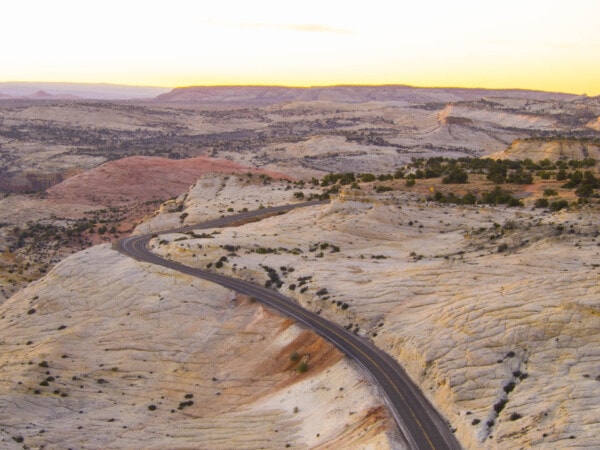In my mind’s library of favourite places we’ve stayed, The Old Bookstore in Iceland is a classic, an original that sparks deeper appreciation every time I pick it off the memory shelf.
I had booked a night’s stay at The Old Bookstore and because we wanted an early start the next morning before it opened, we arrived in time to spend an hour in the shop.
How easily you are transported to the past when entering into the very same house, built in 1898, where the shop first opened, the old-world charm of furnishings and dècor almost unchanged, vintage ledgers with handwritten entries accounting for every krona transacted since the store opened showcased on the walls, and behind the counter, the original owners’ granddaughter, Áugusta Jóvinsson, in a long paisley skirt, her black sweater collared by a large white lavallière, like you might expect an Oxford librarian to wear.
But Áugusta, we soon discovered, is very much a woman of today.
“I started working here as a teenager,” she said, “Now my son Eyþór and his wife Elin run the shop. But seven days ago they had their first child, a baby girl—my first grandchild! So, I’m just helping out while they are in Reykjavik.”
Wooden bookshelves are neatly stacked with an extensive selection of titles. New books by well-known Icelandic authors like Halldór Laxness. English translations of the sagas; I bought one for Clare. “You might like this,” Áugusta said, picking up a children’s book with a cow diving off the pier on the cover. “My son wrote it. It’s based on a true story about a cow that escaped from a slaughterhouse and swam to safety. She saved two lives because the next spring she gave birth to a calf.” Kamlyn will like this I thought, adding it to my pile, along with an Icelandic cookbook for me.
There is no fust of old books here, even though the shop has hundreds of used titles of many genres published in both Icelandic and English. They sell second-hand books according to how much they weigh on the vintage scale. As the sign reads:
Bookcoin is like Bitcoin, just a bit better.
For one Bookcoin, you can buy 1 kg of books.
1,000 kr.
Magellan, who likes a bargain, didn’t find anything compelling enough to buy a Bookcoin, about $10 Canadian.
Here in the oldest original store in Iceland Eyþór has a policy of only selling items from Iceland (I added a tweed bowtie from Iceland’s Kormakur and Skjoldur to my pile) or from global companies that have been around for more than a hundred years. Crane stationery (1770). Cire Trudon candles (17th century). El Casco desk accessories (1920).
“Here’s a potential birthday present for you,” announced Magellan, handing me a fountain pen made by Kaweco (est. 1883) and then helping Augusta find a thin nib for it. I use it daily, a reminder of The Old Bookstore. We spent more money here than at any shop in the country.
Áugusta explained that when her grandparents, Jón Eyjólfsson and Guðrún Arnbjarnardóttir,first opened the store in 1914, they sold food and household essentials. In those days you had to have a license to sell books, which they got six years later.
“Would you like to see the museum?” Áugusta asked us.
The museum is the apartment her grandparents moved into in 1915. Everything in it is as it was in 1950 when Jón died.
“Eypór trained as an architect, specializing in culture and museums,” Áugustaexplained when we marvelled at the good condition everything seems to be in. How perfect. Can you imagine the family gathering here for special occasions, which they often do?
“You’ll be in Unna’s room tonight, my mother’s room,” Áugusta said. Unna is the nickname of Steinunn Jónsdóttir, born the same year as my mother, 1928. The postcard on the bed reads:
In this room, she and Gudmundur started their cohabitation and here they raised their first children before building a new house on the adjacent plot.
How easily the memory of Unna’s room returns to me. The jolt of electric green, the postcard view of the mountains jutting above the Önundarfjörður, the real postcard clipped to the note from Eyþór and Elin on the comfy bed.
The two other rooms, named for family members Dísa and Bóbó, were occupied by two women, a photographer from Hamburg and a writer from Iceland on a travel assignment in the Westfjords. We shared the sunshine-yellow kitchen, dining table and bathroom with its extra-long claw-foot tub, lost on me but well suited to the towering photographer.
“Paradise is a library,” wrote Jorge Luis Borges.
Catalogued in our library of favourite places, this bookstore is a volume filled with annotations.
Navigation
Kyzer, Larissa. “Of Cows and Courage: New Picture Book Celebrates Hero Heifer.” Iceland Review, September 19, 2020.
Jóvinsson, Eypór. Sæunn the Swimming Cow.
The Old Bookstore In a town of only 140 people (which we’ll feature in its own blog one day), it attracts more than 80 visitors a day.

























2 Responses
Great subject for a travel blog, I am sure the first trip I ever took, in my mind, was within a book from a school library in Edmonton. The first of many trips taken without ever leaving this school library building and one I will never forget. Libraries are almost a forgotten building of today yet there contents are left unused as electronics now seem to control the minds of the youth of today. Electronics are important and useful but will they replace books and the knowledge within? I hope not.
Thanks for the story.
Cheers,
Somewhere I read a wonderful thought about libraries, that there is no other place that gives you something you want, for free, that you can take home and use for a goodly length of time and return weeks later with no contract other than civil trust.